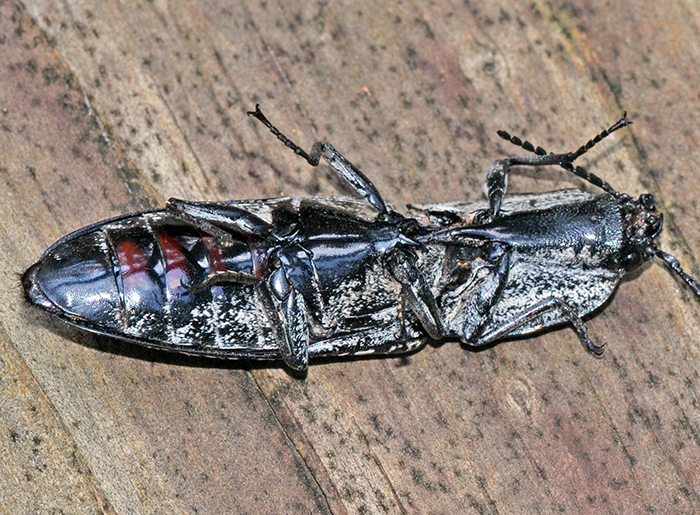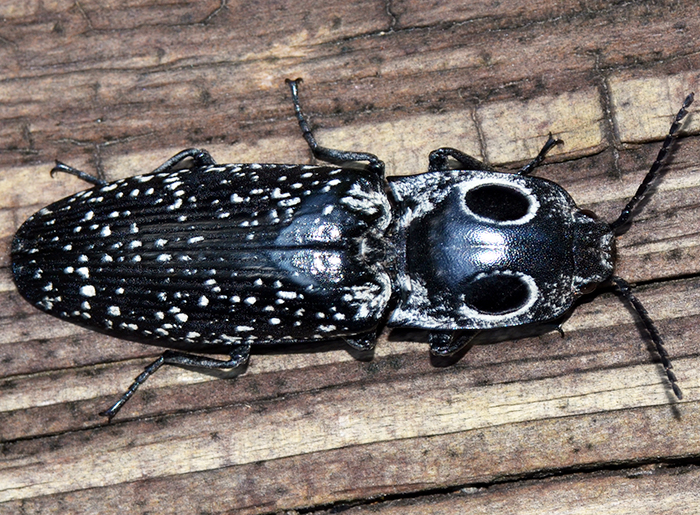 Alaus oculatus (Eyed Click Beetle). | I'm excited to finally have a photo of the iconic Eyed Click Beetle. The large "fake" eyes are seemingly meant to intimidate or confuse predators. Its amber-colored larvae feed on grubs of wood-boring beetles. They have strong jaws and should be handled with care. The small photo shows the same specimen on its back. It actually stopped moving when it noticed me even after I turned it around.
bug guide (these photos): https://bugguide.net/node/view/1565457 UF: http://entomology.ifas.ufl.edu/creatures/trees/beetles/click_beetle.htm | |
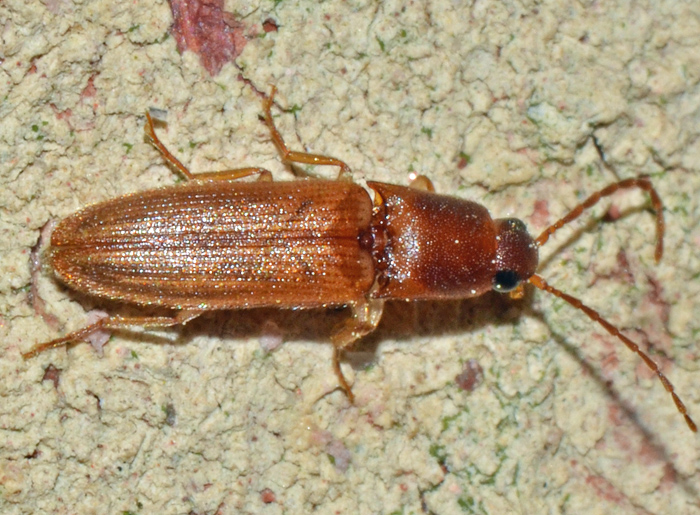 Anchastus fumicollis. | Anchastus fumicollis is endemic to Florida. bug guide (this photo): http://bugguide.net/node/view/1207362 | |
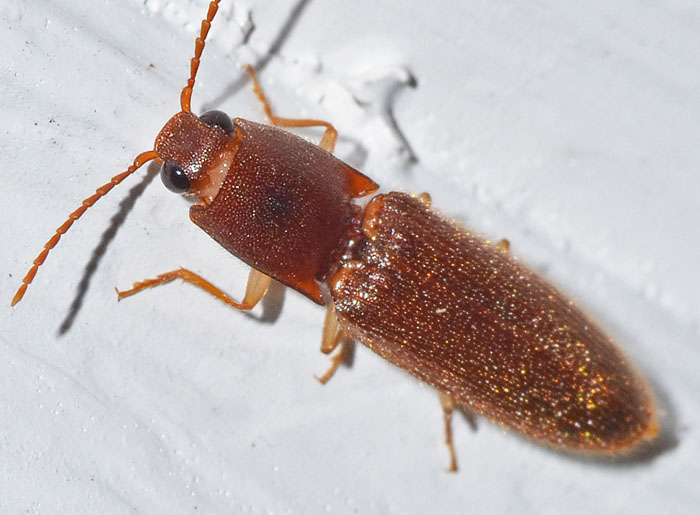 Athous cucullatus. | This small click beetle sat nicely in a perfectly fitting groove of our window frame and then started to move around. It is Athous cucullatus. The genus has 40 species in North America. bug guide (this photo): http://bugguide.net/node/view/1077863 | |
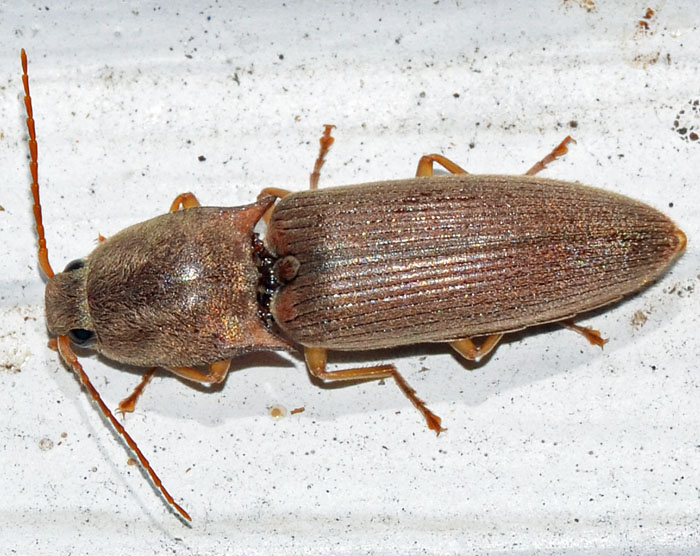 Conoderus lividus. | A common click beetle in the Eastern US. bug guide (this photo): http://bugguide.net/node/view/1085612 | |
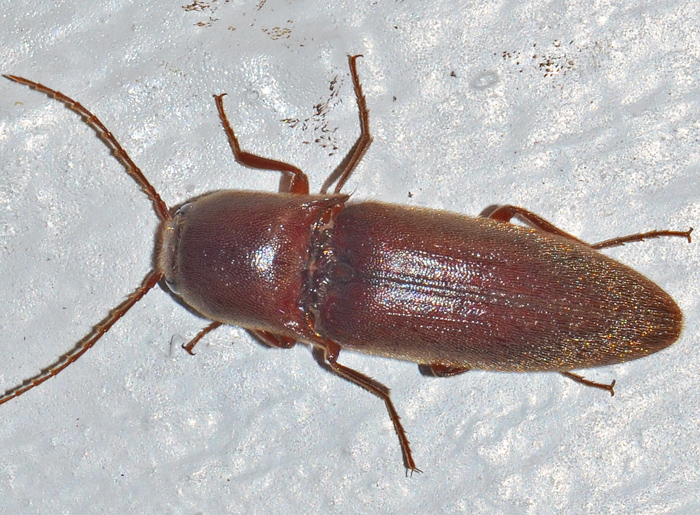 Diplostethus carolinensis. | Diplostethus carolinensis is a rather large click beetle. The brownish color on this photo surprised me, because in real life it looked rather blueish black to dark gray. bug guide (this photo): http://bugguide.net/node/view/1251592 | |
 Dipropus sp.. | The expert on bugguide.net thought that this click beetle might be a female of D. schwarzi or possibly D. simplex. The genus has eight species in North America. bug guide (this photo): http://bugguide.net/node/view/980595 | |
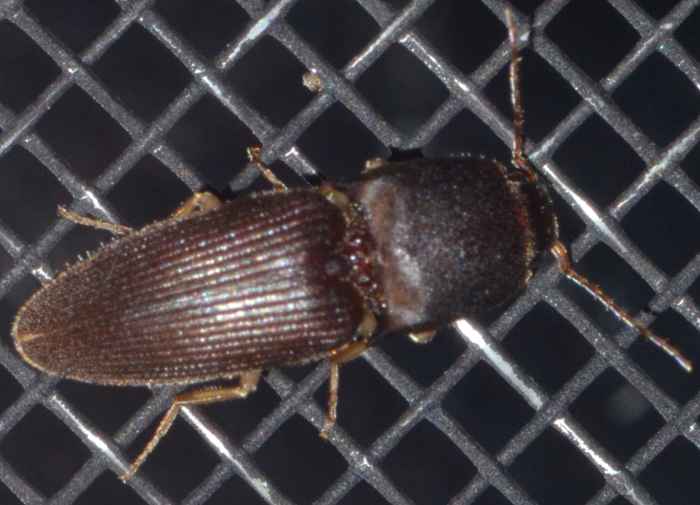 Heteroderes amplicollis (Gulf Wireworm). | This click beetle is a Gulf Wireworm (Heteroderes amplicollis). It is not native but was introduced from South/Central America. Click beetles can produce a loud click sound by snapping a spine on the prosternum into a notch on the mesosternum. This trick can bounce the beetle into the air to avoid a predator or simply to get back on its feet. bug guide (this photo): http://bugguide.net/node/view/575754 wikipedia: http://en.wikipedia.org/wiki/Click_beetle | |
 Melanotus sp.. | This click beetle is Melanotus sp. The genus has 50 over species north of Mexico. In contrast to most other beetles, click beetles have a rather flexible connection between the mesothorax and the prothorax. If placed on their back they can "click" and jump, which typically turns them right side up. bug guide (this photo): http://bugguide.net/node/view/655260 | |
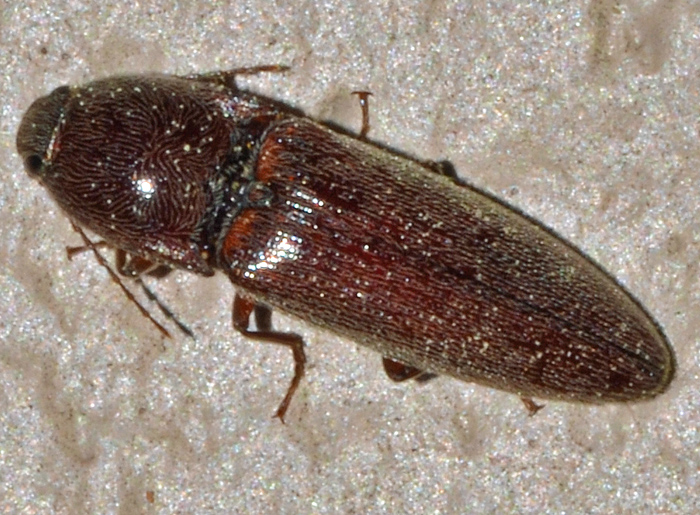 Melanotus morosus. | The body color of this click beetle species is reddish-brown. Its body is evenly covered with white hairs and 10.5-13 mm long. The pronotum is wider than long. One can usually distinguish this species from M. depressus because "they have the pronotal sides parallel and not distinctly divergent as in depressus". bug guide (this photo): http://bugguide.net/node/view/1208107 J.W. Smith, W.R. Enns, J. Kansas Entomol. Soc. 51, 42, 1978: http://tinyurl.com/smith-ennis | |
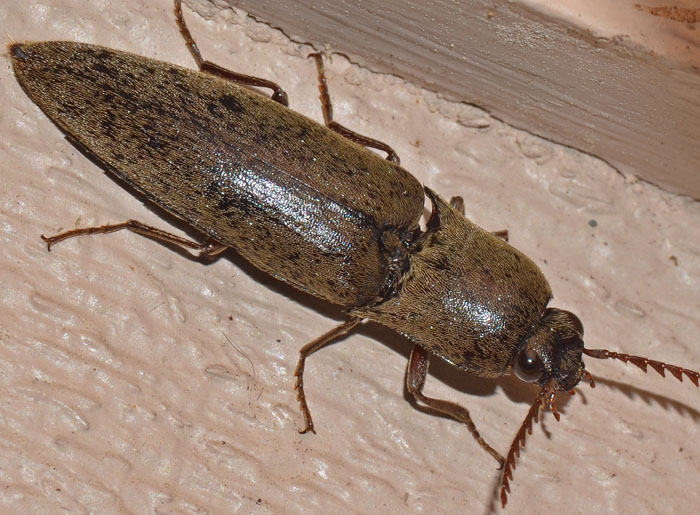 Orthostethus infuscatus. | A "hairy" and rather large click beetle. These "hairs" lie very close to the body that is strikingly elongated. I found this specimen rather close to one of our outdoor lights. A high resolution photo can be accessed here. bug guide (this photo): http://bugguide.net/node/view/986199 | |
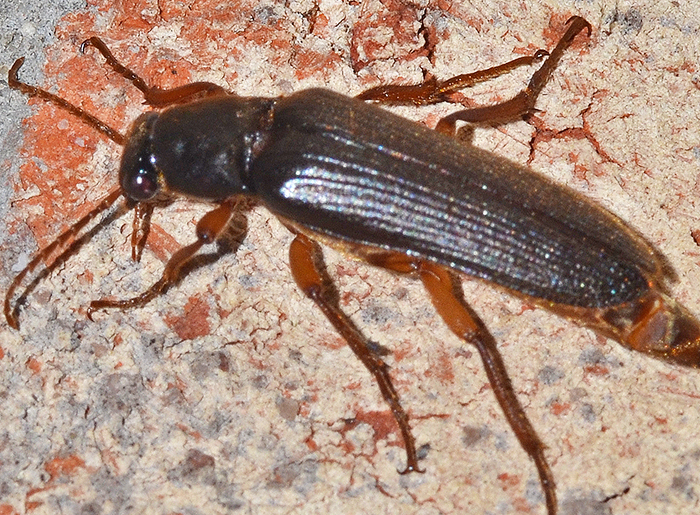 Selonodon sp.. | A fairly large click beetle. The genus Selonodon has 25 species in the US but identification to the species level is apparently extremely difficult. Females are flightless, which might contribute to regional variations that further complicate identification. Bugguide.net also states that "most adult activity seems to be during and immediately after big rainstorms". bug guide (this photo): https://bugguide.net/node/view/1549145 |

